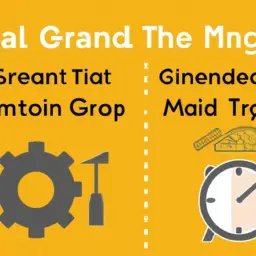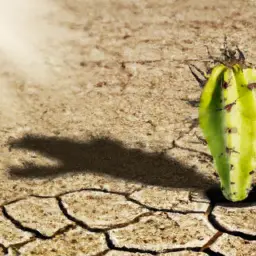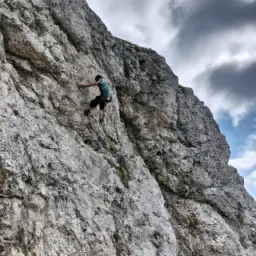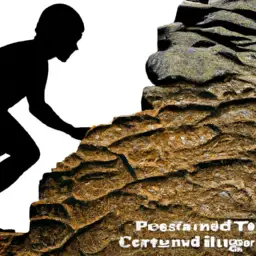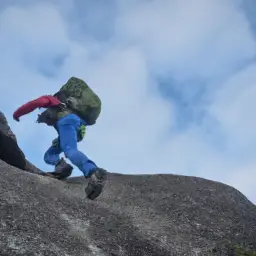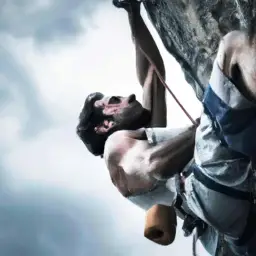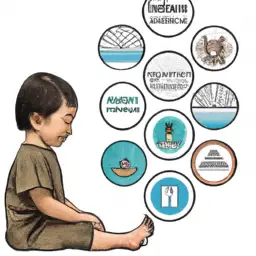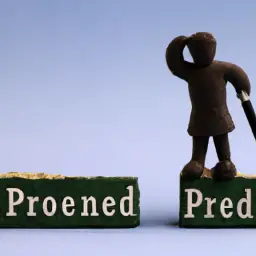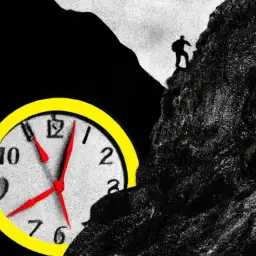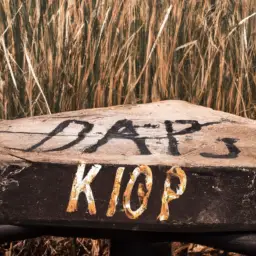Do you want to build a resilient team that can withstand any challenge thrown their way? Then you need to prioritize grit. Grit is the combination of passion, perseverance, and resilience in the face of adversity. It’s what separates the successful from the unsuccessful, and it’s what can make or break a team.
When faced with obstacles, grit allows individuals to push through and keep going. This is especially important for teams, as they often face setbacks and challenges that can derail progress. A team with grit is able to bounce back from setbacks, learn from their mistakes, and continue to move forward.
In this article, we’ll explore the importance of grit in building resilient teams, the benefits of fostering grit within a team, and how leadership can play a crucial role in building a gritty team culture.
Key Takeaways
- Grit is a combination of passion, perseverance, and resilience that is essential for building resilient teams.
- Building grit through challenges and setbacks is crucial for developing resilience, and grit is a better predictor of success than talent alone.
- Real-life examples of grit in business and sports, such as Michael Jordan and Sara Blakely, demonstrate the importance of mental toughness in facing challenges and the need for perseverance in achieving goals.
- Fostering a culture of continuous learning can help team members develop the resilience and adaptability they need to thrive in an ever-changing workplace, and developing grit and resilience within a team is crucial for their success and ability to overcome obstacles together.
Defining Grit and Resilience
You might be wondering, what exactly is grit and resilience and why are they so important in building a strong team?
Grit is the combination of passion and perseverance towards long-term goals, while resilience is the ability to recover quickly from difficulties or setbacks. These two traits are closely linked to success, both individually and collectively as a team.
Building grit through challenges and setbacks is essential for resilience. It’s important to understand that failures are not the end, but rather an opportunity to learn and grow. Encouraging team members to take risks, learn from their mistakes, and keep pushing towards their goals, fosters a sense of grit among the team.
When the team is collectively resilient, they are better prepared to handle unexpected challenges and bounce back stronger. Overall, developing grit and resilience within a team is crucial for their success and ability to overcome obstacles together.
The Benefits of Grit in Teams
Having a team with strong determination and perseverance can lead to impressive accomplishments. This is where grit comes in. Measuring grit is not an exact science, but it generally refers to a person’s ability to persist in the face of adversity. In teams, grit can make all the difference in achieving goals and overcoming obstacles.
Grit is not the same as talent. While talent may give a team a head start, it is grit that keeps them going when things get tough. In fact, studies have shown that grit is a better predictor of success than talent alone. When a team has grit, they are able to push through challenges, learn from their mistakes, and adapt to changing circumstances. This resilience can help a team achieve great things, even in the face of seemingly insurmountable odds.
| Grit vs. Talent | ||
|---|---|---|
| Talent | Grit | Talent + Grit |
| A team with talent may start strong, but without grit, they may falter when faced with challenges. | A team with grit may not have the same level of natural talent, but their determination and perseverance can help them achieve great things. | A team with both talent and grit has the potential to be unstoppable, able to overcome obstacles and achieve even greater success. |
How to Foster Grit in Teams
If you want to foster grit in your team, you should encourage a growth mindset. Emphasize perseverance and highlight the importance of hard work. By promoting the idea that skills can be developed through effort and dedication, your team members will be more likely to persist in the face of challenges.
It’s also important to recognize and reward hard work over natural talent. This will inspire your team to put in the necessary effort to achieve their goals.
Encouraging a Growth Mindset
By cultivating a growth mindset, you can develop the resilience needed to overcome obstacles and contribute to a strong and resilient team. Here are three ways you can encourage a growth mindset:
-
Promote self-belief: Encourage team members to believe in their abilities and potential. Help them understand that failure is a natural part of the learning process and that setbacks are opportunities to grow and improve.
-
Cultivate a can-do attitude: Encourage team members to approach challenges with a positive and proactive attitude. Help them understand that they have the power to control their response to difficult situations and that they can choose to approach problems with a growth mindset.
-
Foster a culture of continuous learning: Encourage team members to embrace new challenges and opportunities for growth. Provide them with the resources and support they need to develop new skills and expand their knowledge.
By fostering a culture of continuous learning, you can help your team members develop the resilience and adaptability they need to thrive in an ever-changing workplace.
Emphasizing Perseverance and Hard Work
Emphasizing perseverance and hard work can lead to achieving long-term goals and overcoming challenges in a meaningful way. It’s important to understand that perseverance isn’t the same as talent and hard work isn’t the same as natural ability.
Perseverance is the ability to keep moving forward despite obstacles and setbacks, while talent is a natural aptitude or skill. Hard work is the effort put into achieving a goal, while natural ability is a genetic trait or inherent skill.
By emphasizing perseverance and hard work, you can help your team develop the grit needed to overcome challenges and achieve long-term success. Encourage your team to focus on the process of achieving their goals, rather than just the end result.
This means celebrating small victories along the way and learning from setbacks. Encourage your team to embrace challenges and see them as opportunities for growth and development. With a focus on perseverance and hard work, your team can build resilience and achieve great things.
The Role of Leadership in Building Grit
Leaders who prioritize fostering a culture of perseverance and determination within their teams are integral to building grit. As a leader, it’s your responsibility to nurture grit through mentorship and leading by example in building grit and resilience.
You must communicate the importance of grit to your team and create an environment that encourages the development of this trait. One way to nurture grit is by providing mentorship to your team members. This involves guiding them through challenges and encouraging them to persevere despite setbacks.
By sharing your own experiences of overcoming obstacles and pushing through difficult times, you can inspire your team to develop their own grit. Leading by example is also crucial in building grit. You must demonstrate a strong work ethic, resilience, and perseverance in your own actions and decisions.
This will help your team to see the value of these traits and adopt them in their own work. By prioritizing grit in your leadership style, you can help your team to become more resilient and better equipped to handle challenges.
Examples of Grit in Action
You’re about to explore some of the most inspiring examples of grit in action. From famous historical figures who overcame adversity to real-life examples of grit in the business and sports world. You’ll discover the power of perseverance and determination. Get ready to be inspired by those who refused to give up and achieved incredible success against all odds.
Famous Examples of Grit in History
Throughout history, individuals such as Amelia Earhart, Abraham Lincoln, and Martin Luther King Jr. have demonstrated remarkable grit in overcoming adversity and achieving their goals. These famous figures are often cited as examples of grit and resilience, but there are many others who have shown remarkable perseverance in the face of great obstacles.
Napoleon Bonaparte is well-known for his grit and determination. Despite his relatively humble beginnings, he rose to become one of the most powerful and influential leaders in European history. His military campaigns and political maneuvers were marked by a fierce determination to succeed, even in the face of overwhelming odds.
Similarly, Winston Churchill’s resilience during World War II is legendary. Despite facing enormous challenges and setbacks, he remained steadfast in his resolve to lead Britain to victory, inspiring his countrymen with his courage and determination.
These examples demonstrate that grit and resilience are not just admirable qualities, but essential ones for achieving success in any field.
Real-Life Examples of Grit in Business and Sports
Witnessing individuals in the world of business and sports overcome challenges and setbacks with unwavering determination and grit can be truly inspiring.
Take for example Michael Jordan, who was cut from his high school basketball team but used this as motivation to become one of the greatest basketball players of all time. His mental toughness and grit allowed him to push through failures and setbacks, leading him to six NBA championships and numerous accolades.
Another real-life example of grit in business is the story of Sara Blakely, the founder of Spanx. Blakely faced rejection after rejection when trying to pitch her idea for shapewear to investors, but she persevered and eventually landed a deal with Neiman Marcus.
Today, Spanx is a billion-dollar company and Blakely is a self-made billionaire. These examples show the importance of developing mental toughness and overcoming adversity in order to achieve success in both business and sports.
Frequently Asked Questions
How does grit differ from other personality traits, such as perseverance or determination?
When it comes to grit vs. perseverance, there are some important differences to consider. While perseverance involves continuing to work toward a goal despite obstacles, grit takes things a step further by also including a passion for achieving that goal.
In terms of the importance of grit in leadership, having team members with grit can be incredibly valuable. Gritty individuals are more likely to stick with difficult tasks and persevere through challenges, which can help a team stay motivated and ultimately achieve success.
However, it’s important to note that grit is just one of many important personality traits for building resilient teams. Other traits, such as adaptability and emotional intelligence, are also crucial for creating a team that can weather any storm.
Can grit be learned or developed, or is it solely an innate trait?
You may be wondering if grit can be learned or developed, or if it’s solely an innate trait. The good news is that grit can indeed be developed through various strategies and techniques.
One way to develop grit is to set specific goals and work towards achieving them despite obstacles. Another strategy is to practice perseverance and resilience in the face of adversity. Additionally, seeking out challenging situations and pushing yourself outside of your comfort zone can help build grit.
The role of mentors in cultivating grit is also important, as they can provide support, guidance, and encouragement to help individuals develop their grit over time. With commitment and effort, anyone can work towards developing grit and becoming more resilient in the face of challenges.
Are there any potential downsides to emphasizing grit in team building?
When it comes to building resilient teams, grit is certainly an important factor to consider. However, there are potential drawbacks to emphasizing grit too heavily.
For starters, not everyone is naturally inclined towards being gritty, and putting too much emphasis on it can make some team members feel inadequate or undervalued. Additionally, a balanced approach to team building is always best.
While grit is important, it’s just one piece of the puzzle, and there are other traits and skills that are equally important to consider when building a strong and resilient team.
Ultimately, it’s important to strike a balance between emphasizing grit while also recognizing the value of other important skills and traits.
How does grit relate to teamwork and collaboration?
When it comes to teamwork and collaboration, grit plays a vital role in team dynamics. Grit and collaboration go hand-in-hand because it takes persistence, determination, and perseverance to work together towards a common goal.
With grit, team members can overcome obstacles and challenges that may arise, and they can push through difficult times to achieve success. When team members have grit, they’re more likely to be resilient and committed to achieving their objectives, which can lead to stronger collaborations and better outcomes.
Therefore, it’s essential for teams to cultivate grit and encourage team members to develop this trait to improve their teamwork and collaboration.
Can grit be overemphasized to the point of causing burnout or stress in team members?
When it comes to grit in teams, it’s important to strike a balance between pushing yourself and your teammates to achieve goals and maintaining individual wellness.
Recognizing individual limits is key to avoiding burnout or stress.
While it’s important to have a strong work ethic and determination, it’s equally important to know when to take breaks and prioritize self-care.
By keeping this balance in mind, you can build a team that is both resilient and healthy, allowing for sustained success in the long run.
Conclusion
So, you now understand the importance of grit in building resilient teams. By fostering grit in your team, you can create a group of individuals who are able to persevere through challenges, learn from their failures, and ultimately achieve success.
By encouraging a growth mindset, providing opportunities for learning and development, and creating a supportive team culture, you can help your team develop the resilience needed to overcome obstacles and achieve their goals.
Remember, leadership plays a crucial role in building grit within a team. As a leader, it’s up to you to set the tone and create an environment that values hard work, perseverance, and learning from failure.
By embodying these qualities yourself and leading by example, you can inspire your team to develop their own grit and become a truly resilient group. So, embrace the power of grit and start building a resilient team today!
































